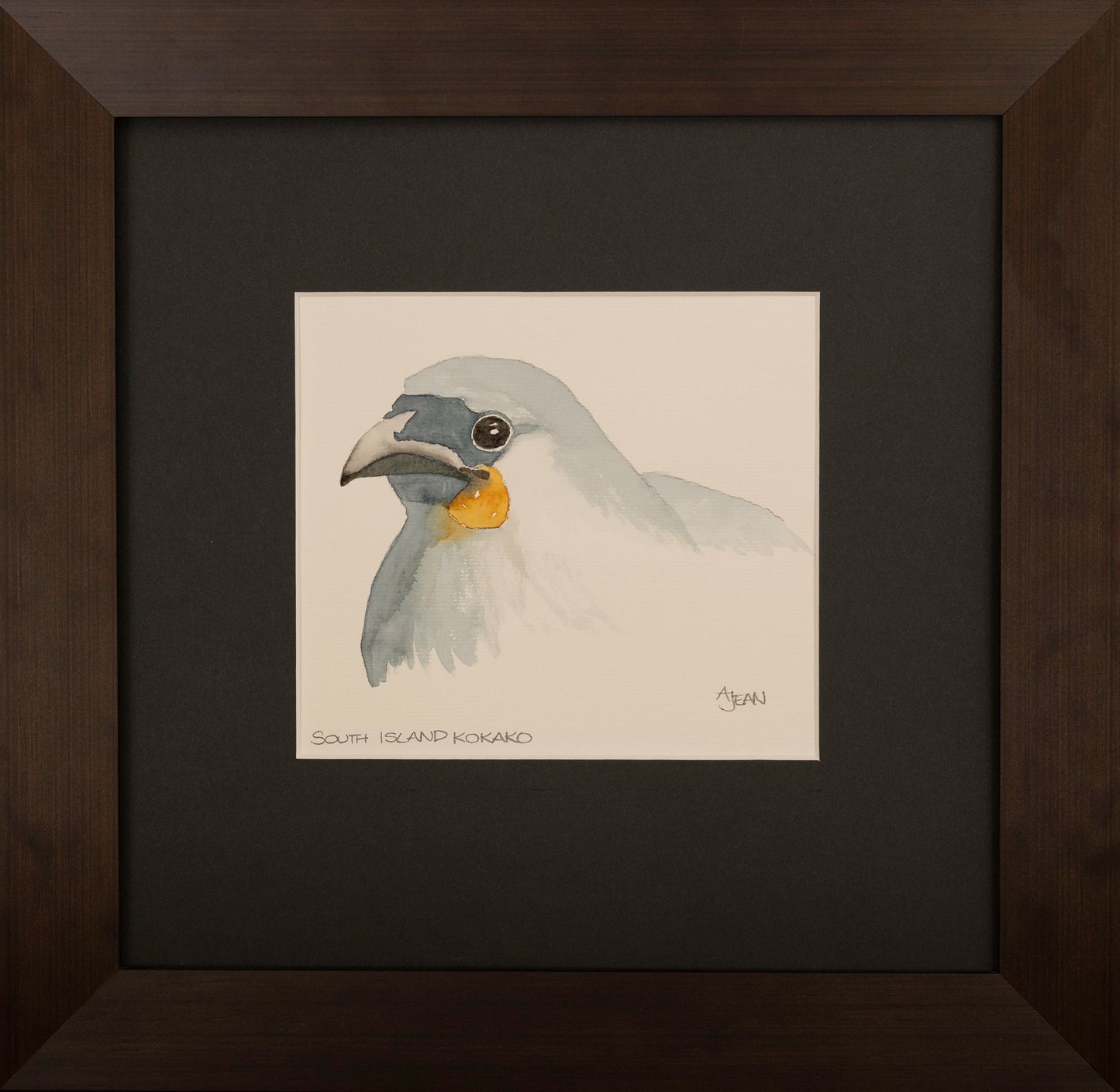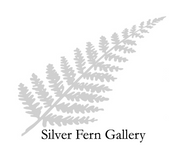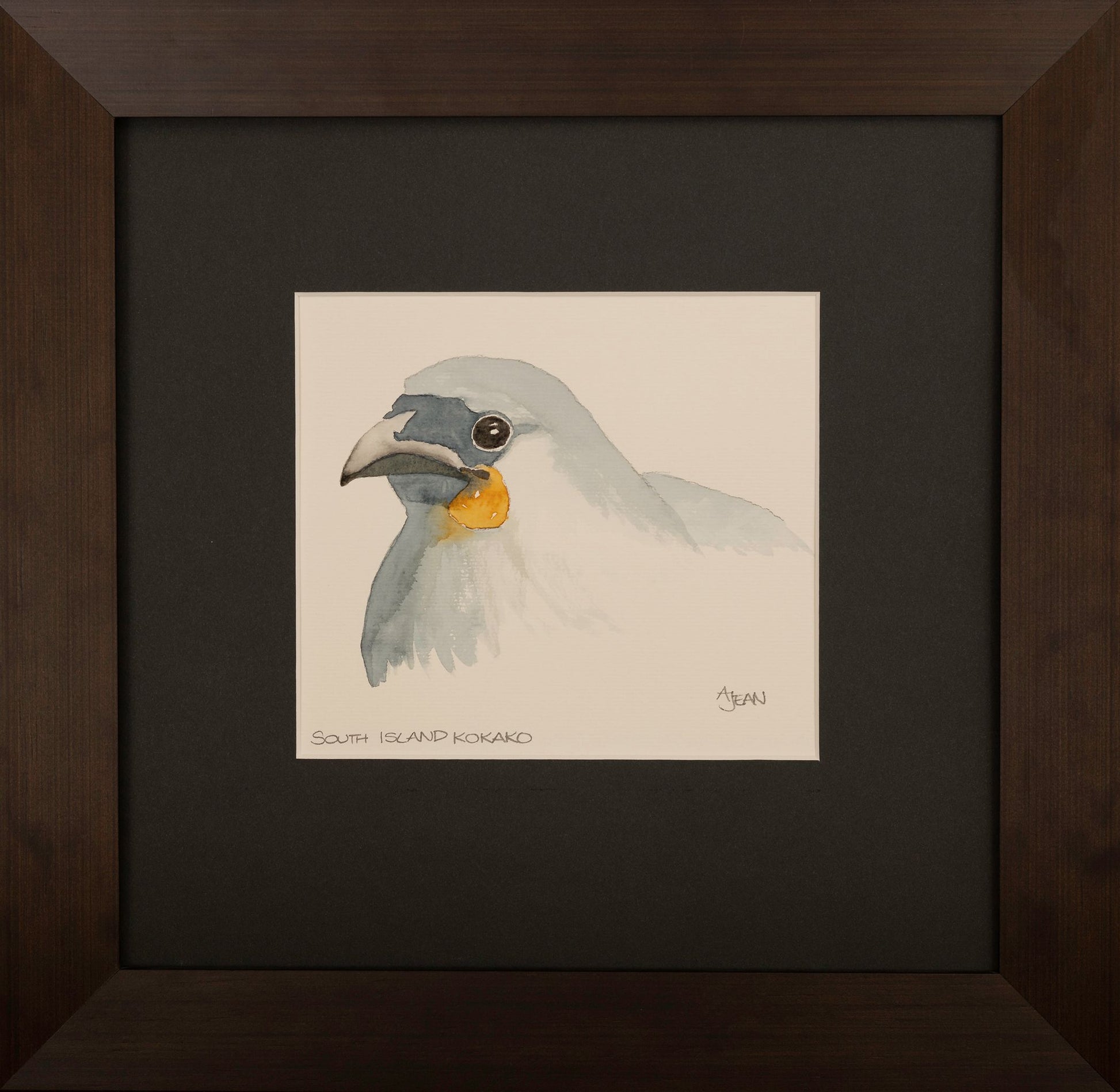silverferngallery
Watercolour Painting by Avril Jean - South Island Kokako
Couldn't load pickup availability
Original watercolour bird study by Avril Jean.
Mounted and framed in a New Zealand made wooden frame.
Frame size 40 x 39 cm
Mount outer size: 32.5 x 31.5 cm
Mount window size 18.5 x 16.5 cm
About the South Island Kokako:
South Island kokako were slightly smaller and darker than the North Island kokako, with orange rather than blue facial wattles. In the early 1800s, they occupied beech forests and low scrub above the tree line on both sides of Southern Alps from north-west Nelson south to Fiordland, and mixed podocarp forest on Stewart Island, plus some forested areas of Otago and Southland. They declined markedly after introductions of cats, ship rats and stoats, and were very rare by the late 1800s. The range of the South Island kokako shrank to Fiordland and Stewart Island, with the last accepted twentieth century sighting at Mt Aspiring National Park in 1967. Declared extinct by the Department of Conservation in 2008, the species' conservation status was moved from extinct to data deficient in 2013, leading to acceptance of a sighting from near Reefton on the West Coast of the South Island in 2007.
South Island Kokako update - (credit - information from Star News 1 February 2024)
The South Island kōkako - believed to be extinct for decades - may have finally been seen in Southland.
The songbird was listed as extinct until 2013, when the Department of Conservation reclassified its status as data deficient.
"We definitely have faith and we definitely do not believe it's extinct in the South Island."
The most recent report of a possible South Island kōkako was on private land between two areas of conservation land about 13km west of Tuatapere.
"A hunter has seen and heard a bird we can only assume is the South Island kōkako, so we've got in touch with the landowners there who have a sustainable forestry operation."
About 10 years ago there was a report of two large grey birds being sighted in an area a few kilometres to the west of the most recent report.
Now, the trust has asked people to go to the site of the most recent suspected sighting - with the permission of the landowners and a permit - to follow up.
"It is big news, you know the description of it was really encouraging, the sighting of a grey bird, the way it glided across the clearing, the sound that it made, a sort of chime."
Searching for decades
Perkins said she had been involved in searching for the bird for the last seven and a half years but the trust's expert Rhys Buckingham had been looking for more than 40.
Every year at its annual general meeting the trust reviewed whether it was worth continuing to search for the bird.
"And each year we think there is hope, some of the sightings have given us great hope, some of the follow-up searches we've been doing have given us hope and science is giving us hope - whether it's environmental DNA perhaps through Otago University, or bioacoustics and fancy algorithms and artificial intelligence from Victoria University."
Extinction was something people should be concerned about, she said.
"If we are involved in causing the extinction of a species, if it's a human-induced loss - which this would be if it has occurred or if it will occur - then we should be concerned.
"There's a hall of shame pretty much at Zealandia in Wellington showing the species that have become extinct since humans arrived in New Zealand and it's a tragedy and we want to try and find this bird before it's too late so it can be conserved appropriately."
The kōkako has a part to play in the forest bird eco-system.
The South Island bird looks similar to the North Island one but the South Island variety has orange wattles, while the one in the North Island has blue wattles.
There may also be a slight difference in size between the varieties and a slight difference in their calls.
There was still a $10,000 reward in place which was launched seven years ago for anyone who could confirm the existence of the South Island kōkako.
People who think they may have heard or seen a South Island kōkako are encouraged to use their phone to take a photo if possible, or to record the bird song.
"We've had over 400, 423 I think it was at the last count since we launched this campaign and about 20 percent of them we've rated as probable, about 18 percent we've been able to exclude on the basis of lots of details from the person reporting it whether it's a recording, or a photo or a really good description so we can confirm a different bird in those cases."


